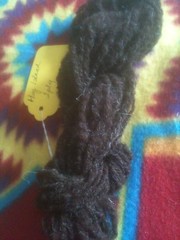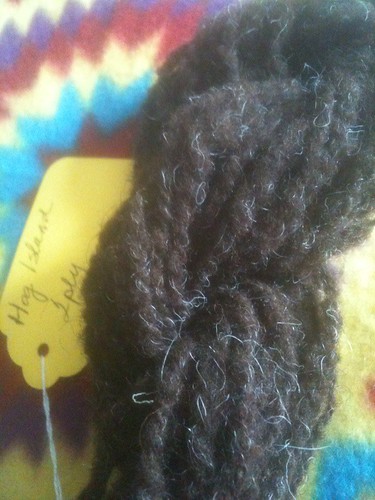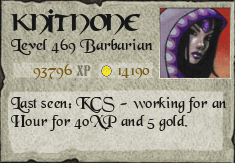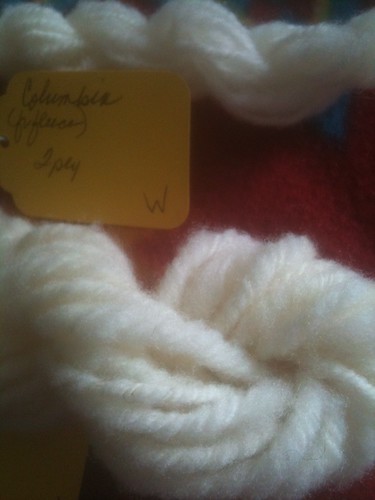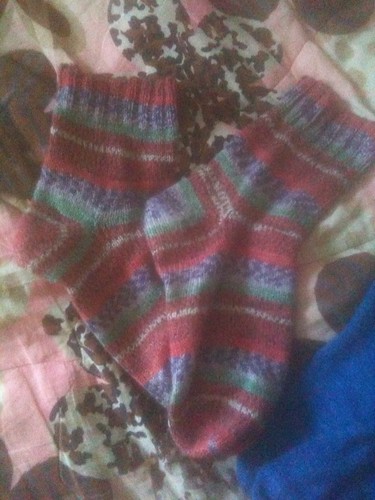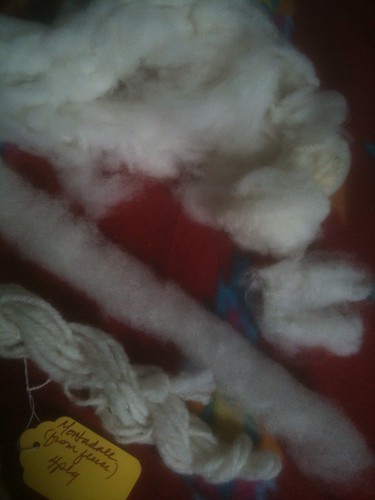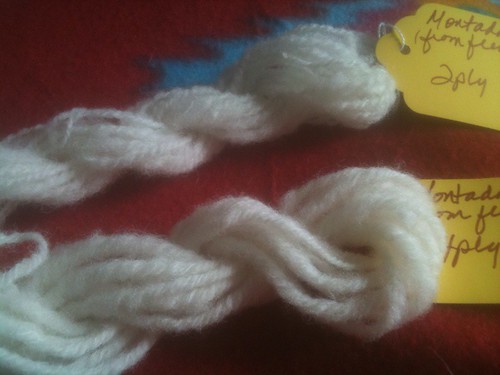Columbia is a recent US breed created by crossing Rambouillet and Lincoln sheep. It is a dual purpose (meat and wool) breed with a micron count of 24 to 31, and an average staple length of 3.5 to 5 inches.
My sample fiber, from pre-washed fleece, falls on the short end of the scale. Many locks are only two inches, although there are locks in the three to four inch range. Just not many of them, or at least there weren't in the portion of the sample I worked with. There's a lot more left that I haven't gone through yet, so....
Anyway, it has a soft but crisp hand, no luster. I flicked first then hand carded. It cards nicely and spins well from the rolags. I spun long drawish from the rolags for a 2ply and a 4ply yarn.
Hog Island is a critically rare feral sheep breed, and not listed in either of my reference books. About 200 years ago a flock of sheep were left on Hog Island off the Virginia coast to fend for themselves. Over time, they adapted to the island conditions and became feral sheep. The island was purchased in the 1970s by the Nature Conservancy who considered the sheep detrimental to the island environment. Some sheep were slaughtered, others were removed from the island and now reside at historical sites in Virginia. Because they are feral, Hog Island wool is variable in type and amount [hogislandsheep.org]
I found the sample I received had a short staple length of less than 1.5 inches and was coarse feeling. Like it was all combing waste. This was commercial roving prep. It was very difficult to spin directly from the roving, so I re-carded it (hand cards) and spun it long draw for a 2ply sample.
I realize, because of the variability of this Sheep's fleece quality, that my sample might not be the best or even typical of the breed. That said, I found Hog Island to be very unpleasant to work with, and I would need some serious bribery (like really, really good chocolate, or some washed Cormo) to tackle this breed again. And that's very unfortunate considering the critical rare status of the breed.
